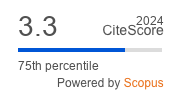Article | Open Access
Leaving the Crow’s Nest: How Creative Co‐Creation Transcends “Us‐Versus‐Them” Experiences of Dutch Refugee Students
| Views: | 2901 | | | Downloads: | 2397 |
Abstract: This article is based on five years of longitudinal participatory action research on how former pre‐bachelor programme students with a refugee background experience finding their way into Dutch higher education and society. The four‐member research team and authors (two of which were former refugees), found that refugee students face a significant barrier of “us‐versus‐them,” especially in an educational context. We explored how creative co‐creation contributed to rethinking difference and sameness in higher education by breaking through or transcending this divide. Creative co‐creation through play, storytelling, or constructing artefacts enables “alterity,” approaching the other from the other’s position. Movement and action help to shape the world around us: Connecting and shifting positions creates sameness while leaving space for difference. Creative co‐creation during our research process included making co‐creation artefacts and activities, thus involving outreach to broader audiences for engagement. In the research process, it became clear that successful participation matters to all students and provides more opportunities for all, not just refugee students. A new notion of “we” in Dutch higher education and society that does not perpetuate the divide between “us” and “them” requires a shared responsibility. Higher education needs the university authorities and the teachers to make room for student stories and should provide spaces for dialogue and community development.
Keywords: agency; social justice; community development; creative co‐creation; higher education; refugee students; us‐versus‐them divide
Published:
© Hanke Drop, Peter Hendriks, Oumar Barry, Rania Abdulsattar. This is an open access article distributed under the terms of the Creative Commons Attribution 4.0 license (http://creativecommons.org/licenses/by/4.0), which permits any use, distribution, and reproduction of the work without further permission provided the original author(s) and source are credited.


